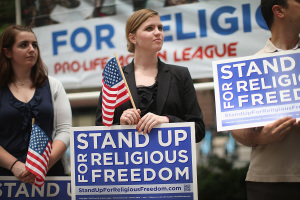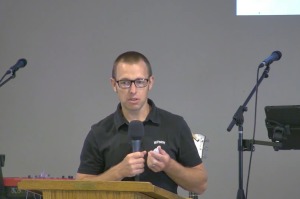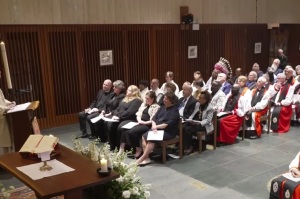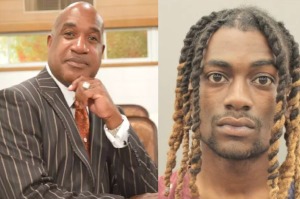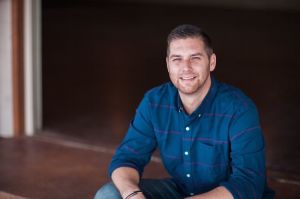Occupy Mov't 101: Who Are They? (Part 1)
A Closer Look at the 99 percent
After two months of occupying Wall Street, protesters across the country have begun to occupy the conversation that Americans are having regarding the current economic state of the country. However, many people are still unsure as to who the Occupy Wall Street (OWS) protesters are, and what exactly it is they want. As the protests spread across the country, it is important for the general population to have a full understanding of this grassroots movement.
Who is protesting?
OWS is a youth-led movement, something that has not been seen in this country for decades. Noreen Malone, a 27-year-old writer for the New York Magazine recently penned a story titled “It Sucks to be Us,” about what it is like to be a twenty-something in today’s economy. Malone told Daniel Gross of The Daily Ticker that most protesters are “disappointed” because they “did all the things” that they were supposed to do, which includes going to college, but have since found that they are not reaping the benefits they were promised, like a job.
"For the young people who are out there day in and day out … what is getting them out there is pretty visceral economic hurt," she said. "Many of them are stories of people who have college degrees … they have a huge amount of loans and they have found themselves unable to get jobs, and that's why they can find time to spend in Zuccotti Park or wherever they are protesting."
The Bureau of Labor revealed that as of last month, just 74 percent of Americans ages 25-34 were working. As a result, 14.2 percent in this age range are living with their parents, a statistic that is up 11.8 percent from 2007. With statistics like these, it is perhaps understandable why the youth in America are frustrated with the system that has been handed to them.
Robert David Graham, a writer for Errata Security blog, was fed up with the reporting of the OWS movement and decided to head to New York City himself to report on the occupation. He writes about his on-the-ground take away about the kind of youth involved:
“What is not mentioned is the fact that the protesters are overwhelmingly college students, or recent graduates who still haven’t found jobs. They aren’t just any college students, but the stereotypical sort that you might expect to be involved in campus activism, such as graduate students in ‘Gender Studies.’ I found nobody with engineering or science degrees, but many from arts and acting colleges. After talking with one guy for a while about unemployment and his difficulty in finding a job after college, I found out that he was a ‘poet.’ I’m not sure he understood that employers aren’t looking to hire poets.
“The only person I met that had a political science degree was one of the police officers ‘keeping the peace.’”
There is no hard evidence to back up the claim that the protesters are mostly “poets” or liberal arts majors, however, many on-the-ground reports have come to the same conclusion as Graham regarding the academic make-up of the protestors.
Furthermore, much of the mainstream media has criticized OWS for its perceived “whiteness” and lack of racial diversity. There are no numbers to back up whether or not this is true, however, some of the organizers of the protest have worked hard to bring more minorities into the movement after several pieces of negative press were picked up by the media.
First, U.S. Congressman and civil rights icon, John Lewis (D-Ga.) was denied an opportunity to speak at Occupy Atlanta.
The majority of the protesters in Atlanta voted against him speaking to the crowd.
This sparked outrage all over the social media world, many claiming that protesters in Atlanta were racist.
"To #occupyatlanta general assembly. U are a bunch of d***heads. Congressman John Lewis is an American hero," hip-hop mogul Russell Simmons tweeted. "In order for #occupywallstreet to succeed we are gonna need John Lewis to write legislation."
Additionally, an African-American protester in Philadelphia claimed that volunteers there called her a “nigger” as she waited to use the communal cell phone charging station. She responded by forming her own branch of the OWS movement called Occupy Philly: The People of Color Committee. Other splinters of the movement have also focused on the minority aspect as well. Occupy the Hood works within the OWS movement in order to mobilize minorities on issues of economic disparity.
Despite alleged under-representation in the OWS movement, minorities make up a majority of those suffering economic woes. African-Americans, for example, make up approximately 12 percent of the nation’s total population, but 21 percent of the nation’s unemployed.
Graham writes about race within the movement:
“The protesters are also predominantly white with blacks underrepresented. On the flip side, blacks are over-represented in the police force. The protesters often compare themselves to the Civil Rights Movement, but the photographs of the recent arrests often show black policemen arresting white protesters. I don’t know if this is a vindication of the Civil Rights Movement or if there is still more work to go, to get the blacks better ensconced in middle-class American to send their kids off to college with that combination of privilege and entitlement that turns them into protesters.”
This is Graham’s harshest criticism of the movement that he, for the most part, applauds for being able to self-organize and voice their thoughts in a “loving” way.
Conservative think tank American Enterprise Institute sent staffers to Zuccotti Park to experience the movement first-hand. Eric Teetsel of AEI said he did not know what to expect when he first got there.
“I was surprised at how articulate, thoughtful, and concerned the occupiers were that I talked to. There’s an overarching sentiment (at OWS) that things can be better than they are.”
The OWS was “inspired by the uprisings in Egypt and Tunisia” that started in January and became known as the Arab Spring, a time when Arab countries stood up to oppressive dictators. Many in the OWS movement see this as the “American Autumn” in which citizens are standing up to greed.
What do they Want?
The OWS website states that it is “fighting back against the corrosive power of major banks and multinational corporations over the democratic process, and the role of Wall Street in creating an economic collapse that has caused the greatest recession in generations.” In particular the OWS seems to be about fighting the:
• inequality between ordinary Americans and the wealthy
• corporate greed in respect to job exportation penalties, illegal employee fines, importation tax, and too much power in the Federal Reserve
• domestic greed in respect to welfare and healthcare
• political greed in respect to financial unaccountability during campaigns
There has been no official or specific goal released from the group. But the main objective for the protests seems to be to bring attention to the greed in both government and on Wall Street. The protest that started in Zuccotti Park, New York City, in September has since spread to Oakland, San Diego, St. Louis, Chicago, D.C., and Boston. Internationally, it is now in London, Rome, Amsterdam, and Tokyo.
“Inequality is one thing the Occupiers are all angry about – and the issue clearly resonates with many others, since there is substantial national support for the OWS movement according to recent surveys,” Dr. Meyer, who is president and chief economist of E. P. Systems Group, wrote in an e-mail to The New York Times.
“Given that the movement has not made demands, per se, its focus on inequality is a) increasing discussion of the topic about which most of the population has been ignorant, and b) attracting support from others, who the movement is apparently successfully arousing over its key topic of concern.”
Both Democrats and Republicans can use OWS as a movement that reinforces its policies: the left sees it as a validation of social democracy and unionism; the right sees it as validation of conservative principles denouncing bailouts. It is, however, leftists groups that are becoming closer to the organization in order to co-opt the protesters to support their policy views.
The next part of the series will focus on the political philosophy and legalities of the Occupy movement.
















